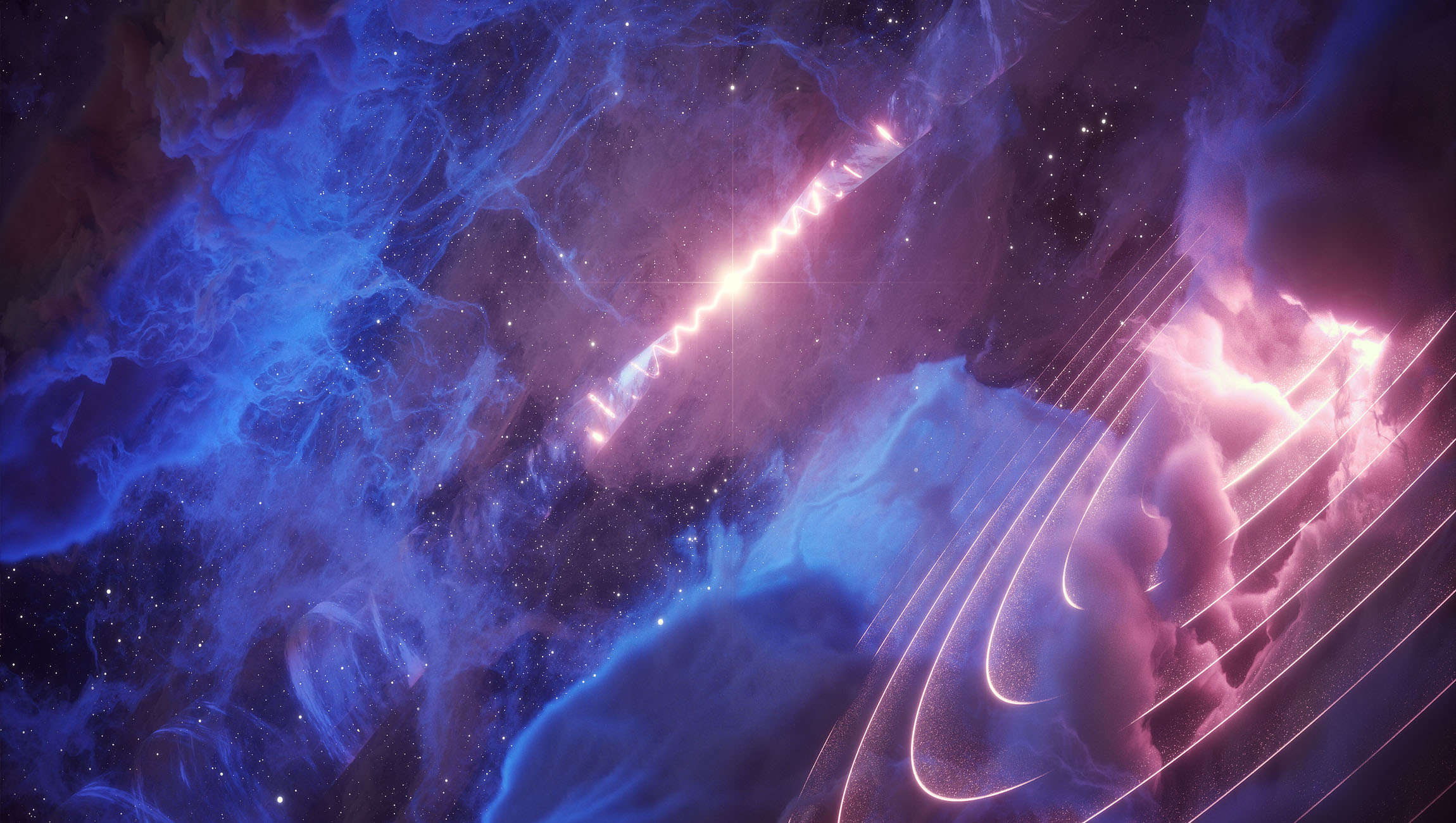Create a free profile to get unlimited access to exclusive videos, sweepstakes, and more!
The 'heartbeat' of a black hole 'heard' in space for the first time ever

Black holes are the last things you’d ever expect to have a heart, since they mercilessly devour everything that crosses the event horizon and smash it beyond recognition with crushing gravitational force, but it turns out they can have a heartbeat.
Just 15,000 light years away (which is nothing in cosmic terms), microquasar SS 433 has a “heartbeat” that is somehow synced with mysterious gas cloud Fermi J1913+0515 in the Aquila constellation. An international team of astronomers has just discovered this strange phenomenon for the first time. Quasars are binary systems consisting of a black hole and a companion star orbiting each other. Star stuff swirls into the black hole’s accretion disc and into its gaping maw, which belches out plasma jets from each end. What connection these two objects have is an enigma that is starting to come to light.
“We started this work in 2014, but at thtat time there was not enough data to detect the signal,” astronomer Jian Li, who co-authored a study recently published in Nature Astronomy, told SYFY WIRE. "We kept monitoring SS 433 until we finally detected the gamma ray emission from Fermi J1913+0515 in 2019. When we first got the results, we did not know if Fermi J1913+0515 was associated with SS 433, since it is not in the center of the system."
Li and his team analyzed more than a decade’s worth of gamma ray data from the Fermi Gamma-ray Space Telescope to find this strange phenomenon. Even this so-called microquasar has a black hole up to 20 times the mass of our sun and a star around 30 solar masses. Most quasars are titans in comparison, with black holes and stars whose solar masses are in the millions. Matter from the star falls into the black hole’s almost inescapable gravity as they orbit each other. However, some of this matter does escape in the form of huge jets whose superfast particles and intense magnetic fields spew out X-rays and gamma rays. This is where things start to get weird between SS 433 and Fermi J1913+0515.
The accretion disc of SS 433’s black hole precesses — its axis changes direction as it rotates. Because the axis cannot stay still, it takes its jets with it, and instead of shooting material in just one direction, they scatter it through their surroundings as they move with the black hole. This process repeats itself every 162 days. What Fermi data revealed was a gamma-ray signal, now known as Fermi J913+0515, with the exact same periodic “heartbeat” that was mysteriously synchronized with the cycle of SS 433. But how can an object with no outrageously fast infusions of gas pull this off?
“"We carried out timing analysis, detected a periodic flux change from Fermi J1913+0515 in sync with SS 433 jet precession, confirming the link between SS 433 and Fermi J1913+0515," said Li. "The precession of SS 43 could be explained by the periodic pull of the giant secondary star, moving both the accretion disc and its outflows simultaneously."
Though Fermi J913+0515 is stuck in a place without anything too exciting going on, data analysis showed that outside forces had to be involved. The gaseous outflows from the black hole of the microquasar are actually powering the double “heartbeat” from only 100 light years away. However, exactly how the black hole SS 433 is doing this remains an enigma. Li and his team believe that the nuclei of hydrogen atoms, which are high-energy protons that flash across space at the speed of light in cosmic rays, influence Fermi J913+0515. They could be onto something because stars, like the one being eaten by SS 433’s black hole, burn hydrogen.
"The heartbeat was unexpected, and there is no full explanation yet," Li explained. "One possible scenario is that the fast protons produced at the end of the jets or near the black hole, are periodically injected into the cloud. Whenever this outfolow of fast protons strikes the gas cloud, it lights up in gamma rays, which would explain its strange heartbeat."
If this phenomenon is happening between a small quasar and a gas cloud, could it possibly happen with much more massive quasars? Li believes so.
"Similar processes could happen in larger quasars," he said. "However, because of how much farther they are, and their much larger scale, it might be hard to distinguish the quasar wtih current instruments for gamma-ray detection."
For now, this tell-tale heart has not yet given up all its secrets.


























